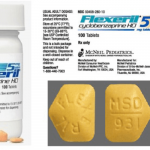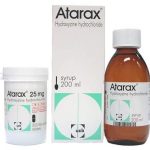Why Is Ropinirole Being Discontinued?

Ropinirole is a medication used alone or with other medications to treat the symptoms of Parkinson’s disease (PD; a disorder of the nervous system that causes difficulties with movement, muscle control, and balance), including shaking of parts of the body, stiffness, slowed movements, and problems with balance. Ropinirole is also used to treat restless legs syndrome (RLS or Ekbom syndrome; a condition that causes discomfort in the legs and a strong urge to move the legs, especially at night and when sitting or lying down). Ropinirole is in a class of medications called dopamine agonists. It works by acting in place of dopamine, a natural substance in the brain that is needed to control movement.
Ropinirole was first developed in the 1990s by the pharmaceutical company SmithKline Beecham (now GlaxoSmithKline). It was approved by the U.S. Food and Drug Administration (FDA) in 1997 for the treatment of Parkinson’s disease.
Since its initial approval, ropinirole has been found to be effective in treating RLS as well. In 2005, the FDA approved ropinirole for the treatment of moderate to severe primary RLS.
Over the years, various studies have been conducted on the safety and efficacy of ropinirole for Parkinson’s disease and RLS. It is now considered to be a first-line treatment for both conditions.
Ropinirole is available in both immediate-release and extended-release formulations. The immediate-release formulation is taken three times a day, while the extended-release formulation is taken once a day.
While generally well-tolerated, ropinirole can have side effects, including dizziness, nausea, fatigue, and hallucinations. It can also cause impulse control disorders, such as compulsive gambling, eating, or shopping, in some people.
In 2019, it was the 144th most commonly prescribed medication in the United States, with more than 4 million prescriptions. In June 2020 it was approved for veterinary medical use in dogs in the US and UK.
Why is Ropinirole being discontinued?
Ropinirole tablet form as well as some of its extended-release tablet formulations were discontinued by GlaxoSmithKline for business reasons and not medication safety or efficacy reasons according to an FDA notice.
Some Ropinirole forms went off the market in May 2019. The treatment will still be available in its extended-release formulation in doses of 4mg, 6mg, 8mg, and 12mg tablets. The ropinirole hydrochloride tablets in 0.25mg, 0.5mg, 1mg, 2mg, 3mg, 4mg, and 5mg doses in 100-count bottles, and the extended-release 2-mg tablets in 30-count bottles will be discontinued. The dates of final availability are expected to be as follows:
January 2019
• Ropinirole hydrochloride 1 mg (NDC 00074892-20)
• Ropinirole hydrochloride 2 mg (NDC 00074893-20)
March 2019
• Ropinirole hydrochloride 5 mg (NDC 00074894-20)
• Ropinirole hydrochloride extended-release 2 mg (NDC 0007-4885-13)
April 2019
• Ropinirole hydrochloride 0.25 mg (NDC 00074890-20)
• Ropinirole hydrochloride 3 mg (NDC 00074895-20).
May 2019
• Ropinirole hydrochloride 0.5 mg (NDC 00074891-20)
• Ropinirole hydrochloride 4 mg (NDC 00074896-20).
The reason for the discontinuation of GSK’s ropinirole products is believed to be related to commercial reasons, such as changes in market demand and competition from other similar medications.
Is there a substitute for ropinirole?
Yes, there are several alternatives for the treatment of restless legs syndrome. If you are looking for alternative medications, there are several other medications that can be used to treat these conditions. Here are some examples:
1. Pramipexole: This is a medication that works in a similar way to Ropinirole and is also used to treat Parkinson’s disease and restless legs syndrome.
2. Levodopa-carbidopa: This is a combination medication that is used to treat Parkinson’s disease. Levodopa is converted into dopamine in the brain, and carbidopa helps prevent the breakdown of levodopa before it reaches the brain.
3. Bromocriptine: This is a medication that is used to treat Parkinson’s disease and hyperprolactinemia. It works by acting on dopamine receptors in the brain.
4. Gabapentin enacarbil: This is a medication that is specifically used to treat restless legs syndrome. Studies have also shown that Gabapentin can be used to treat the symptoms of restless legs syndrome (RLS). It may be especially helpful if the symptoms are perceived as less intense yet painful. In individuals with a history of peripheral neuropathy or chronic pain, it may be of added advantage. It is unknown how gabapentin relieves symptoms of restless legs syndrome. Even though it may take up to 4 weeks to get the full effects of gabapentin, it is important not to stop taking it suddenly. That could cause withdrawal symptoms such as Anxiety.
It is important to note that the choice of medication depends on several factors, including the severity of symptoms, the individual’s medical history and current medications, and other individual factors such as age and underlying health conditions. It is recommended that you speak with your healthcare provider to determine which medication is most appropriate for your individual needs.





